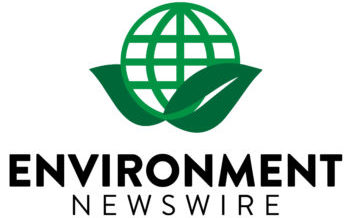BLACKFOOT, Idaho, Feb. 21, 2023 /PRNewswire/ — A new report prepared by Pacific Northwest Project for the Bingham Groundwater District indicates that while the Pacific Northwest retains a relatively stable water supply, Idaho’s Irrigated Agriculture Industry does not exist in a geographical vacuum and it is facing unprecedented water supply challenges, especially in southeastern Idaho.
According to the report, the irrigated agriculture industry in the western US is facing various water supply challenges, reflecting changing water demands and dwindling supplies. This includes forecast changes in much of California, the Colorado River system, and within the Greater Columbia-Snake River Basin area. More recently, some irrigated farming interests are leaving highly water-stressed regions in California and are literally seeking refuge in various parts of the Pacific Northwest.
The report goes on to state that water supply conflicts in southeastern Idaho have evolved after decades of successful industry growth. Conflict has revolved around changing conjunctive surface and groundwater supplies strained by increasing demands and drought, similar to other areas of the western US. Without implementing new water management options, 150,000 acres of irrigated land in southeastern Idaho could likely be in jeopardy.
The report also indicates that the five-county Focus Area in southeastern Idaho (Bingham, Bonneville, Clark, Jefferson, and Power Counties), consists of about 843,000 acres, with a farmgate value of approximately $1.1 billion, and a total household income of about $1.6 billion. The “Target Acres” within the Focus Area represents about 150,000 acres, with an irrigated land market value of about $862,000,000 to $1.7 billion, generating about $15-30 million in property tax revenues. The report states that loss of the Target Acres (about 150,000 acres) would reduce household income by about $268 million.
The pressing concern is southeastern Idaho is the Eastern Snake Plain Aquifer (ESPA) Area, where four of the groundwater districts are most directly affected, along with surface water irrigators who are part of the conjunctive water use, water supply regime.
The above Focus Area and Target Acres represent a significant portion of Idaho’s Irrigated Agriculture Industry, which is about 3.4 million total acres, with a farmgate value of about $6.4 billion and a statewide industry annual household income of nearly $8.8 billion.
The report indicates that there are pragmatic institutional, operational, and infrastructure measures that can be employed by the Idaho Legislature and Idaho Governor’s Office and Executive Branch to help resolve the water supply issues and recommends the State of Idaho provide $175 million in funding for a 10-year “fixed” program for enhanced water management in the Focus Area of Bingham, Bonneville, Clark, Jefferson, and Power Counties.
These water supply issues in southeastern Idaho need to be settled by Idaho’s Irrigated Agriculture Industry before others enter the picture.
A top priority should be improved distribution system management in the stressed river reaches of most direct need in the areas north of American Falls.
The legislature, and junior water right holders, should assume fiscal responsibility for meeting new water management objectives, as several hundreds of millions of dollars in land values are on the table.
Additionally, surface and groundwater right irrigators still have a viable list of operational measures that can be employed to improve water distribution system management and on-farm water application efficiencies.
The State of Idaho also retains a relatively benevolent water code, where loss of water rights (relinquishment) can be avoided under conservation actions, water right leases for change/transfers, and water right mitigation measures. This may involve changing some cultural norms, but it does not involve loss of water rights or water access to effectively farm crops. Even more important, the Director of the Idaho Department of Water Resources (IDWR) wants to work with the industry, not against it, to reach satisfactory solutions.
For more information about this report, contact Darryll Olsen of the Pacific Northwest Project at 509-783-1623 or 354093@email4pr.com.
SOURCE Pacific Northwest Project

